flyPad Settings
Defaults
Settings for various default values of the aircraft.
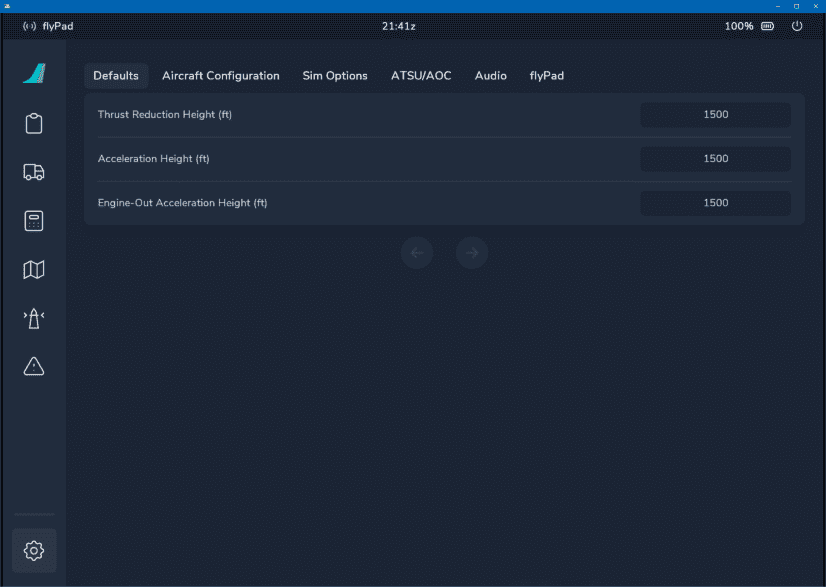
Usage
- Thrust Reduction Height (ft):
- Default for the MCDU setting for thrust reduction height (above ground).
- Acceleration Height (ft):
- Default for the MCDU setting for acceleration height (above ground).
- Engine-Out Acceleration Height (ft):
- Default for the MCDU setting for engine-out acceleration height (above ground).
Aircraft Configuration
Settings for A32NX aircraft configuration.
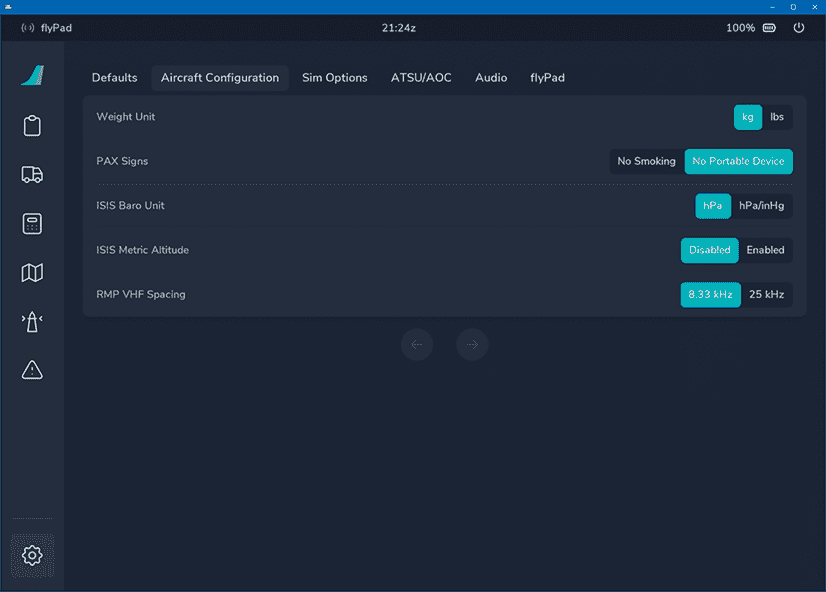
Usage
- Weight Unit:
- The weight unit of the aircraft used for aircraft weight, fuel and simBrief imports.
- PAX Signs:
- Configures if the aircraft should use "No Smoking" or "No Portable Devices" in its ECAM message when the no smoking selector switch on the overhead panel is selected on.
- ISIS Baro Unit
- User can set which baro setting he wants to have in the ISIS backup instrument.
- ISIS Metric Altitude
- User can set which units setting he wants to have in the ISIS backup instrument.
-
RMP VHF Spacing
- Changes the spacing for selectable frequencies in the RMPs from 8.33kHz to 25kHz and vice versa.
Channel Spacing (click to expand)
Aircraft radio systems transmit on a Very High Frequency (VHF) band between 117.975 and 137 MHz. The number of available VHF assignments has increased over the years by splitting the radio spectrum into narrower bandwidths from 50-kHz to 25-kHz channels. The bandwidth can support 760 channels, if channels are spaced by 25 kHz. In 1994, it was decided to introduce a further channel split from 25 to 8.33 kHz. 8.33-kHz spacing was introduced above Flight Level (FL) 240 in International Civil Aviation Organization (ICAO) European (EUR) regions in October 1999 and above FL 195 from March 15, 2007. Currently, 8.33-kHz channels have been implemented in the airspace of all 20 ICAO EUR region states. So far, Europe is the only region that’s moved to 8.33-kHz channel spacing.
Source: universalweather.com
Sim Options
Settings for simulation aspects of the A32NX aircraft.
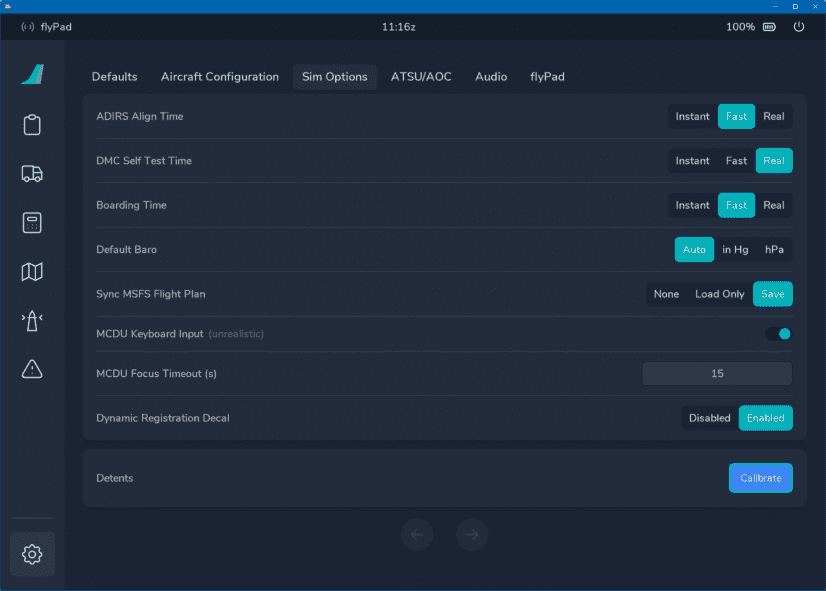
Usage
- ADIRS Align Time:
- User can set this to either a realistic time (~8min), a faster time (~2min) or instant.
- DMC Self Test Time:
- User can set the time for the Display Management Computer's self test (Real ~15sec, Fast ~5sec, Instant).
- Boarding Time:
- User can set the simulated boarding time to either a realistic time (~15min), a faster time (~3-4min), or instant.
- Based on full load - 174 passengers and full cargo.
- User can set the simulated boarding time to either a realistic time (~15min), a faster time (~3-4min), or instant.
- Default Baro:
- User can set which baro setting he wants to have as a default: inHg, hPA or Auto (depends on the airport where the aircraft spawned).
-
Sync MSFS Flight Plan:
- User can set if and how the flight plan synchronization between the simulator and the aircraft should work.
-
The options are:
- None: No synchronization.
- Load Only: Only once when loading the flight.
- Save: Synchronization with every change in the aircraft
Synchronization Issues Expected
The aircraft's custom Flight Management System provides better accuracy and features over the default flight plan manager in Microsoft Flight simulator which results in issues syncing the flight plan from the MCDU back into the simulator. Do not expect it to work properly in all cases.
-
MCDU Keyboard Input (unrealistic)
- Enables the MCDU Keyboard input feature (see MCDU Keyboard).
- MCDU Focus Timeout (s)
- The timeout feature will "automatically unfocus" the MCDU screen after the given amount of seconds.
- Valid range is 5 - 120 seconds.
- Dynamic Registration Decal:
- The dynamic registration number decal shown on the external livery can be disabled to improve appearance when using liveries with a static registration number.
- Detents:
ATSU/AOC
Settings for integrations with various data and information sources.
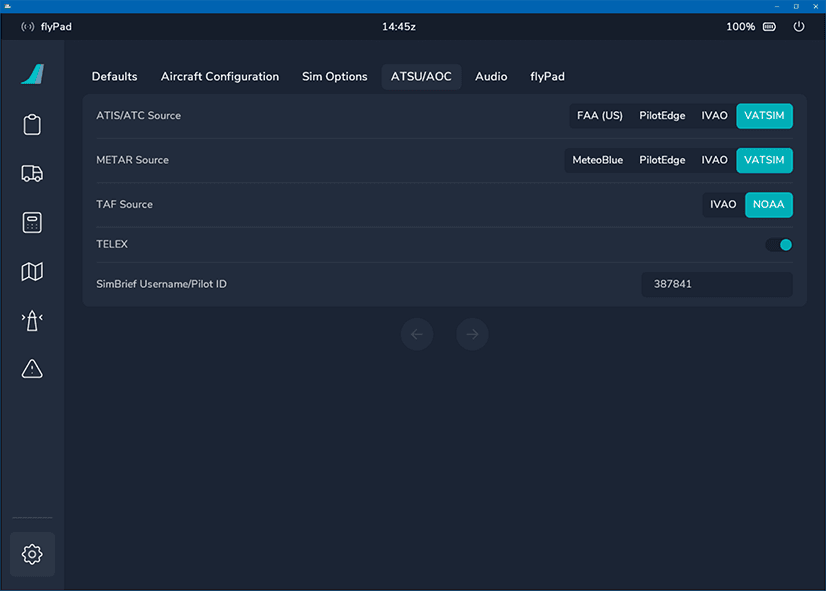
Usage
- ATIS/ATC Source:
- Choose which Online ATC service should be used for ATIS and ATC.
- METAR Source:
- Choose which weather data provider should be used (MCDU only - does not change sim weather).
- MeteoBlue is the weather service the sim uses as well.
- TAF Source:
- Choose which Terminal Area Forecast (TAF) service should be used.
-
TELEX:
-
Enables free text and live map (FlyByWire Live Map).
Warning
If enabled, aircraft position data is published for the duration of the flight. Messages are public and not moderated.
USE AT YOUR OWN RISK -
If enabled a message will be displayed to confirm sharing of the free text and position data to the public.

-
-
Simbrief Username/Pilot ID
- see next chapter
simBrief Integration
Before you can use the A32NX simBrief Integration you need to provide your simBrief account details.
-
Simbrief Username/Pilot ID:
-
Enter your simBrief username or Pilot ID.

-
If you entered a wrong username or Pilot ID a red error message will be displayed.

-
To get your simBrief username or Pilot ID you can go to your simBrief Account settings and open "Simbrief Data".

If you use the Stable version please omit any space characters in your username. If for example your username is "Mr Pilot" the please use "MrPilot" as username.
Audio
Settings for various audio sources and sounds.
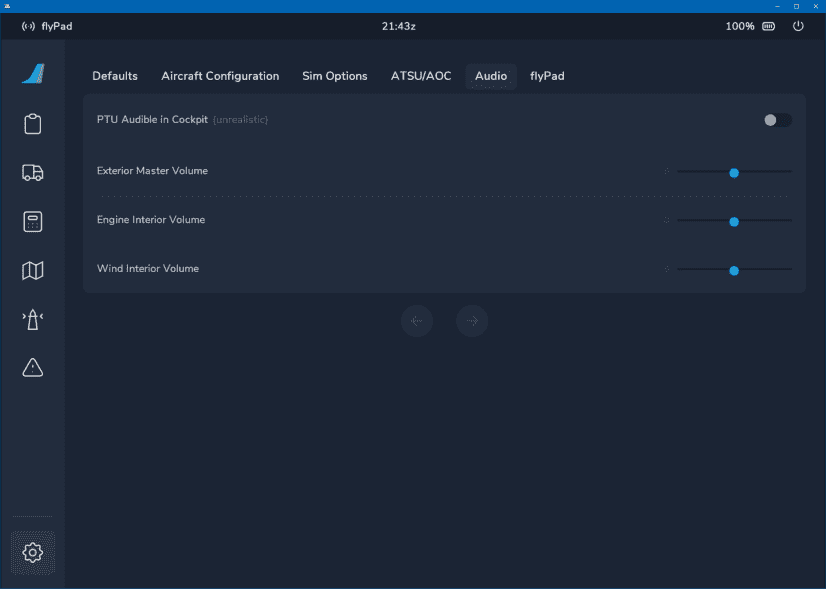
- PTU Audible in Cockpit (unrealistic):
- Allows the PTU to be heard in the cockpit which in real life is not the case. But many people are used to this sound as it is very audible in the passenger cabin.
- Exterior Master Volume:
- Volume for sounds audible when in external views.
- Engine Interiors Sounds:
- Volume for engine sounds inside the cockpit.
- Wind Interior Volume:
- Volume for wind sounds inside in cockpit.
flyPad Settings
Settings for the flyPad itself.
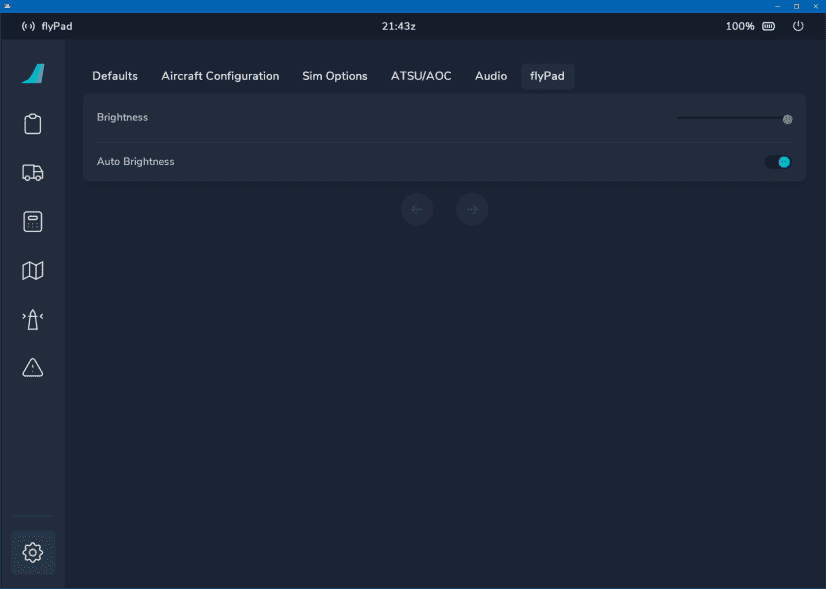
Usage
- Brightness:
- Manually set brightness of the flyPad
- Auto Brightness:
- Sets the brightness of the flyPad automatically based on the time of day.
Throttle Configuration
Please see the Throttle Configuration Guide on how to use this page.
